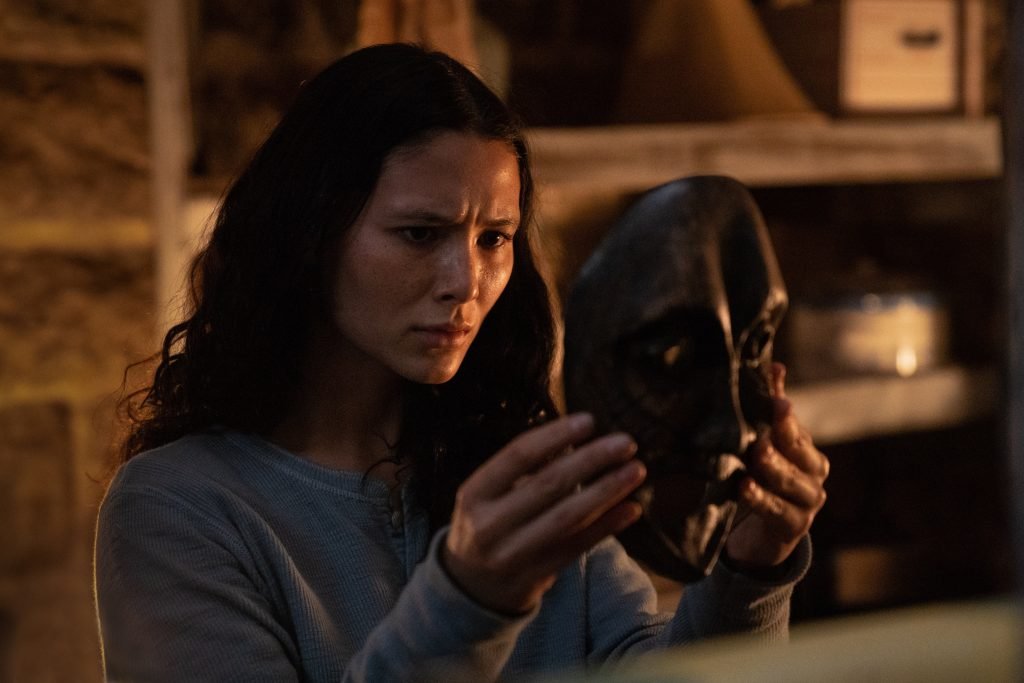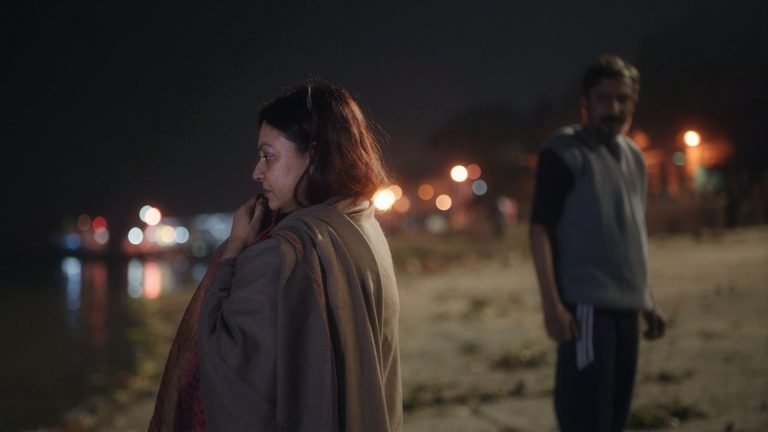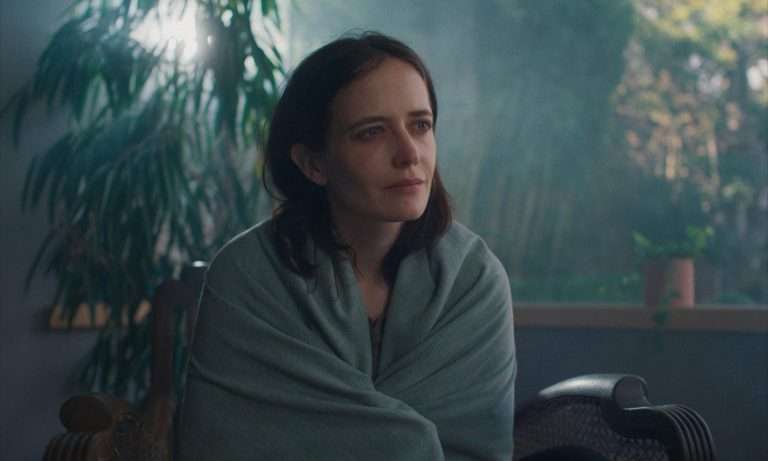Umma Movie Ending Explained & Themes Analyzed: Umma (2022) (or 엄마 in Korean) is the latest film from Iris K. Shim, who wrote and directed the supernatural horror. Although produced in America, the core of Umma is Korean—not just from its cast list (Sandra Oh, Fivel Stewart, and MeeWha Alana Lee), but its focus on Korean culture and heritage. Shim’s fictional feature debut held its premiere in Koreatown, Los Angeles, earlier this year and was met with mixed reviews.
Umma’s complex themes of family, identity, and intergenerational trauma feed into the same Western zeitgeist that hailed Parasite (dir. Bong Joon-ho, 2019) and Squid Game (2021) but floundered in its clichéd script and weak attempt at jump scares. Despite the criticism Umma was met with, there are still a lot of important ideas behind its clunky direction, which are worth unpacking.
Umma Movie Plot Summary & Synopsis:
Like In Domee Shi’s 2022 animation Turning Red, Sandra Oh plays an overbearing mother who is reluctant to let her daughter fly the nest. Although there are no giant red pandas in Umma, it does explore a similar relationship between mother and daughter. Oh, headlines the film as Amanda—a Korean immigrant who cut ties with her old life to home-school her daughter in rural America. Despite their close bond, Amanda is unsympathetic toward Chrissy’s desire to go to college. Instead, she wishes Chrissy (Stewart) would stay home and work on their farm together.
Also, Read – Minari (2020) | An Interpretation of the Film’s Marxist Themes
Not only is Amanda cut off from most of society on her secluded bee farm, but she also bans all technology due to an “allergic reaction.” However, when her mother’s ashes are delivered by her uncle—who she used to call “umma” (Korean for “mother”) before they were estranged—strange supernatural phenomena begin to occur. We learn that Amanda isn’t allergic to technology—her Umma used to electrocute her as punishment. This, and many other traumatic secrets, rise to the surface when the ashes are present, forcing Amanda to face the childhood she’s buried. Umma’s ghost, along with other tormented spirits, plagues Amanda’s house, as well as a kumiho (creature of Korean lore) who eats all their chickens.
Umma is furious at Amanda for neglecting her culture, especially after raising her in a foreign country without any support. When Amanda tries to bury the urn, Umma possesses her. Through Amanda’s body, Umma performs the Jesa ritual she always wanted (a ceremony to honor deceased ancestors), wearing a mask and hanbok (Korean clothing). When Chrissy finds her possessed mother, Amanda attacks her, but Chrissy narrowly manages to escape. Amanda then decides to confront her Umma, explaining how she understands the struggle of raising a child alone in a non-native country, but it doesn’t excuse the abuse.
Umma understands and accepts this, finally finding peace in the afterlife. Amanda learns not only to respect her daughter’s wish to move away but also to embrace her Korean heritage, and the two conclude the film with a Korean ritual, decked out in their hanbok, bowing in prayer.
Related to Umma (2022): 35 Best South Korean Movies of the 21st Century
Umma Movie Ending Explained
When Chrissy gets blindsided by Amanda/Umma, she pleads to the woman behind the mask. When the mask is knocked off, Amanda can see her daughter clearly and respond to her loving appeals. On a different plane of existence, Umma manifests herself in the physical so she and Amanda can talk frankly. They recognize each other’s pain and bitterness, as Amanda admits she left her family behind to find herself when, really, she should have allied the Korean way of life in conjunction with her new one—not run away or suppress it. After this cathartic conversation, Umma can finally let go and rest in peace.
The anagnorisis of the film isn’t simply that Amanda should incorporate Korean practices into her life but also that she must let her daughter go. In the same way, Umma resents her daughter for leaving, and Amanda realizes she has been dominating Chrissy in a similar (though not as abusive) way. The mother and daughter manage to see eye to eye again, rebuilding the strong ties they had at the beginning of Umma (2022), but this time with the loving acceptance that Chrissy must also forge her own identity away from home.
Umma (2022) Movie Themes Explained
Intergenerational trauma and mother/daughter relationships
Putting the paranormal aside, at the heart of Umma is a story of intergenerational trauma, expressed through the relationship between mother and daughter. The first layer of this motif comes from the bond between Amanda and Chrissy, beginning the show with a closeness that resembles best friends. They read and make honey together, laughing in the sunshine, but when Chrissy announces she wants to leave the farm, Amanda reacts badly. Not only does Amanda try to live vicariously through her daughter, but Chrissy is also the one who must face a demonic Umma and pay for Amanda’s unresolved past.
If you peel back the conflict between Amanda and Chrissy, you’ll find it stems from Amanda’s relationship with her own mother. Like Amanda, Umma resented her daughter for leaving their home. Amanda buried this grudge long ago, but with the arrival of the urn comes the inevitable face-off between Amanda and her demons in the closet…literally. The three generations of women lock horns on all sides, and it’s only once Amanda heals her relationship with her Umma that she can reconnect with Chrissy.

Korean culture and heritage
Umma (2022) doesn’t just resent her daughter for becoming estranged; she is also troubled by the fact Amanda abandoned her Korean ancestry—something her uncle also shames her for. The Jesa ritual—consummated by Umma through Amanda—symbolizes her yearning for Amanda to reclaim her native identity. The hanbok and mask (called a Tal in Korea) is something you will find in many Korean households, as Shim explains in an interview: “It’s something that I would see in my house growing up…and the more that I started researching, I started realizing like, ‘Oh, these masks have a very, very rich history.”
Also Read: Belle (2021) Movie Explained
By incorporating this Korean imagery into the film, Shim can highlight Amanda’s disconnect from her homeland and culture, which creates a gulf between herself and her past, her home and the rest of society, and unification across three generations of mothers and daughters.
The metaphorical use of the paranormal
Although Umma (2022) was condemned for not being “scary enough,” it does attempt to use the genre as a tool to investigate its strong themes. Amanda’s traumatic past comes back to haunt her in a very literal sense; demonic creatures kill her livestock, she becomes possessed by the ghost of her mother, and the Tal mask becomes an object of dangerous, transformational power. The Tal Rasha mask is traditionally used to show different characters—human or animal—during performances. But here, it takes on a more sinister role, allowing Umma to possess and terrorize her daughter into submission.
Umma (2022) Movie Review
Umma (2022) is allegorically littered with themes and messages, the root of it being cultural identity across borders—a nexus between Asia and America that has been eloquently explored in recent films such as Minari (dir. Lee Isaac Chung, 2022). The personal tale of cultural convergence and immigration—especially in the 21st-century landscape of multiculturalism—is something we’ve seen time and time again, but unfortunately, Umma offers little to add to it. Umma attempts to utilize the paranormal as a lens into the friction generated between tradition and lineage vs. individuality and progression; however, the horror is mediocre at best.
Flimsy and predictable jump scares are injected into the narrative, offering nothing but a tick in the boxes for horror conventions. Oh carries the weight of the entire film, pulling off a gritty and focused performance amidst a jumble of clichés and bad pacing. Although the characters are given depth and dimension, their development unfolds at breakneck speed, leaving Umma in stagnation before a simplified tying up of strings. An original and urgent message gets lost in an out-of-tune horror, failing to ignite fear or tension despite its good intentions.







![In Conversation with director Sol KIM & Lee JIHYOUNG of Scattered Night [2019]](https://79468c92.delivery.rocketcdn.me/wp-content/uploads/2019/06/KIM-Sol-LEE-Jihyoung-768x387.jpg)
![Only Murders In The Building [2021] Review: Cherish this Fresh blend of Investigative Drama and Comedy](https://79468c92.delivery.rocketcdn.me/wp-content/uploads/2021/10/Only-Murders-In-The-Building-2021-768x432.jpg)

![Descendant [2022]: ‘Sundance’ Review – Reclamation of identity by rediscovery of history as a tangible construct](https://79468c92.delivery.rocketcdn.me/wp-content/uploads/2022/01/Descendant-Sundance-2-768x432.jpg)